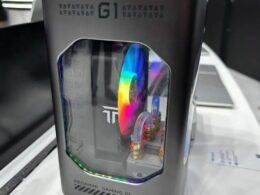TSMC China Continues Operation with American Technology Following US Export License Approval
The chip manufacturing industries, including South Korea’s Samsung Electronics and SK Hynix, as well as Taiwan’s TSMC, announced that they have secured permits to continue production in China using American technology. Recently, TSMC successfully obtained a permanent export license from the US authorities, allowing it to maintain its operation using moderately advanced processes.
Advanced Technological Processes at TSMC Nanjing Facility
According to a report by TrendForce, TSMC’s Nanjing facility can operate with 12nm, 16nm, 22nm, and 28nm processes. Additionally, it can utilize FinFET transistor structures, which are at the cutting edge of lithography technology. This is exactly the type of technology for which the US authorities would want to restrict access in China.
Permanent Status Secured for TSMC Nanjing Facility
This week, the Commercial Times reported that while the TSMC’s Nanjing facility had the right to continue using American technology and receive new equipment under temporary permission granted by US authorities in October 2022, it has now been granted the status of “validated end-user” this month. Essentially, this allows TSMC to manufacture chips in Nanjing indefinitely, modernize the plant, expand production capacity as needed, and supply it with the necessary technological equipment without requiring separate approvals for deliveries from American officials.
TSMC Nanjing Embarks on MRAM Production
The TSMC Nanjing plant plans to produce magnetoresistive random access memory (MRAM), including a variant adapted for the automotive industry, using 16nm technology. Considering the rapid growth of China’s auto industry, having the factory of a leading global contract chip manufacturer in the country will be significant for local customers. TSMC’s second facility in Shanghai specializes in more mature processes, which, for now, are not within the purview of American regulators.





